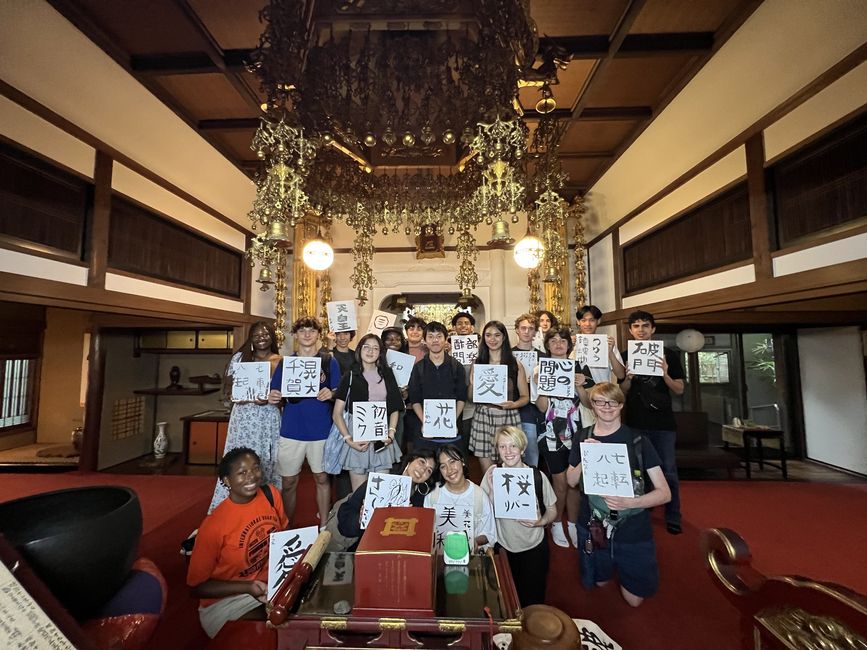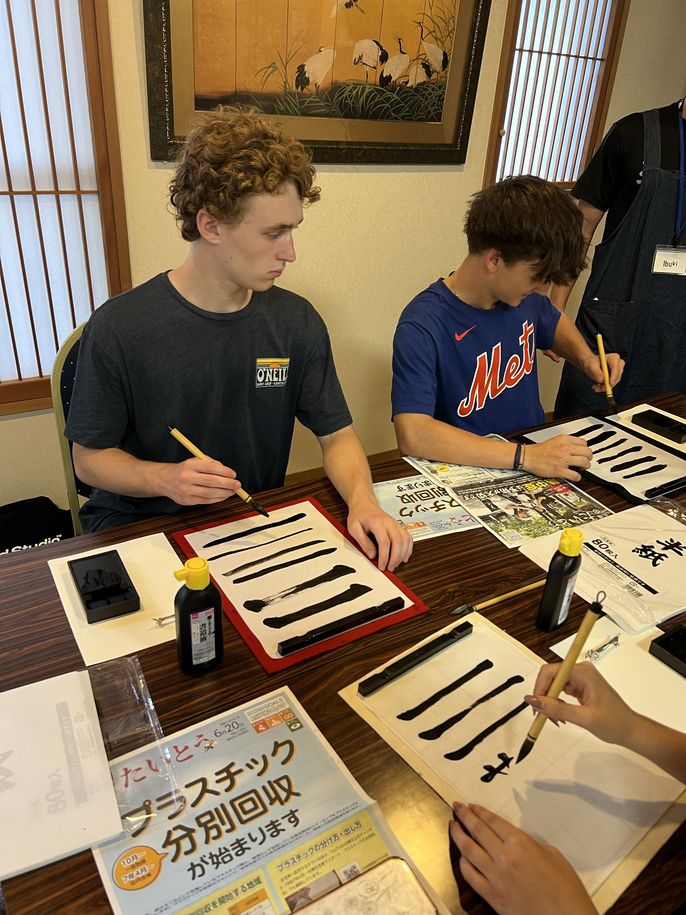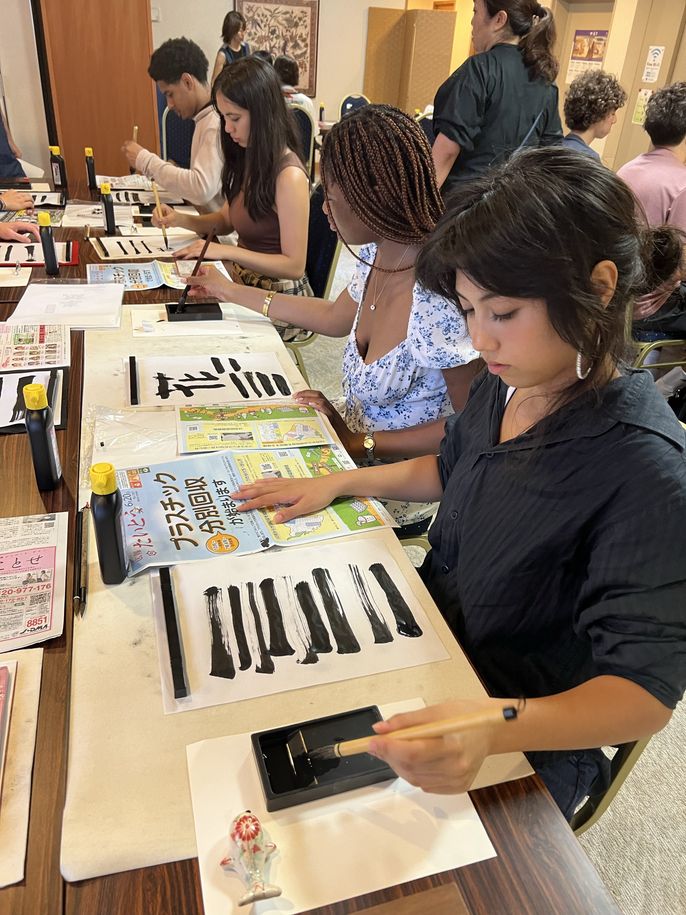Self Expression through Japanese Caligraphy- "Shodo"
To kick off the first day of their final week in Tokyo, Group 3 Language and Culture students visited a "Shodo" or Japanese calligraphy studio near Asakusa. Shodo is a traditional art form that involves writing Japanese characters with a brush and ink on paper or silk. Originating from Chinese calligraphy, which was introduced to Japan around the 6th century. Over time, Shodo has developed a unique style and has become an essential part of Japanese culture, even being a part of the mandatory school curriculum for elementary school children. Shodo represents more than just a means of writing; it is considered a form of meditative practice that cultivates concentration, discipline, and mindfulness.
Upon arriving at the classroom, students were instructed in the basics of Shodo, including the names of brushes and ink, what posture to keep during Shodo, and proper brush strokes. After a short introduction explaining the significance of Shodo in Japanese culture and it's history, each student started by doing practice exercises of brush strokes, and then they graduated to writing their names in the hiragana alphabet. Then the students experimented with writing their names in Kanji characters and writing different kanjis from an example sheet.
After practicing, students were given free rein to pick a favorite Kanji, and given a paper plaque to write on to take home as a one-of-a-kind memento of their time here in Tokyo. The Shodo instructors were very impressed by the student's enthusiasm and level of Japanese understanding. Many students challenged themselves by writing difficult kanji characters, some even learned how to paint different designs such as bamboo, flowers, and animals to frame their kanji characters. After their works were complete, the instructors showed students to the home's shrine, where students posed in front of the altar with their finished pieces.
Related Posts

How I Made $2,000 Referring Other Students on Summer Abroad Programs
Read this blog from one of our past Global Ambassadors and find out how she was able to earn rewards with CIEE and encourage other students to study abroad!
Host Family Weekend
On the final weekend in Japan, students spent time with their host family. This weekend, host families prepared activities for students. Some students learned how to make Japanese food from... keep reading
Discovering Aizome- Japanese Indigo Dyeing
Tokyo Language and Culture students experienced a lesson in traditional Japanese indigo dyeing at Some no Sato, a dyeing shop that was established over 100 years ago in Ochiai, Shinjuku... keep reading



